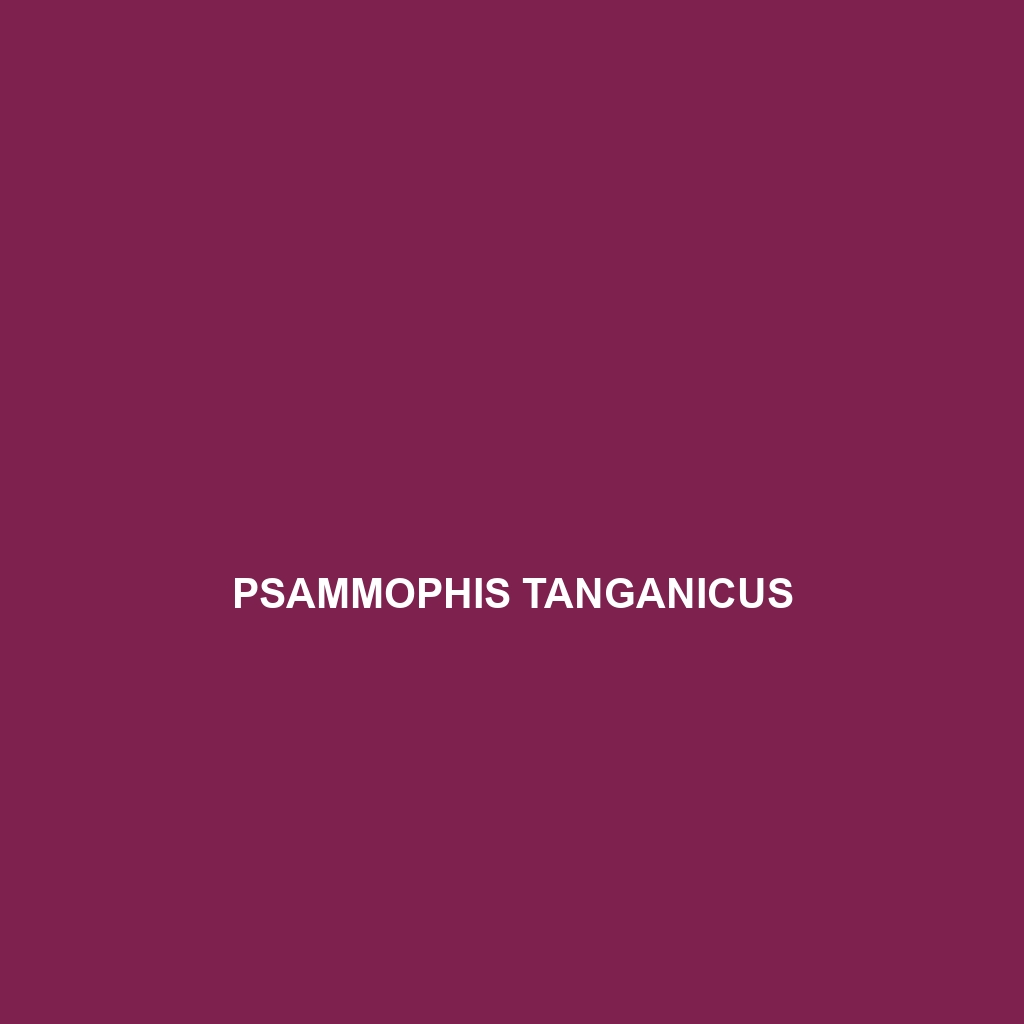<p><b>Pseudoxenodon inornatus</b>, commonly known as the insipid slug snake, is a medium-sized, non-venomous snake native to tropical and subtropical Southeast Asia. Preferring humid rainforests, it features a slender body, muted brown or gray coloration for camouflage, and an insectivorous diet mainly consisting of slugs and worms, playing a vital role in its ecosystem.</p>
Tag: Non-venomous snakes
Psammophis tanganicus
The Psammophis tanganicus, or Tana River sand snake, is a non-venomous snake found in East Africa's sandy habitats, characterized by its slender body, smooth scales, and distinctive light brown coloration with darker patterns. This adaptable species preys on small rodents, lizards, and insects, playing a vital role in local ecosystems while exhibiting unique behaviors such as burrowing and rapid striking for defense.
Psammophis condanarus
<p>Discover the fascinating <b>Psammophis condanarus</b>, or sand snake, a remarkable species thriving in Africa's sandy habitats. With its slender body, effective camouflage, and adaptability, this diurnal predator primarily feeds on small animals, playing a crucial role in maintaining ecological balance.</p>
Prosymna stuhlmanni
<p>Discover the <b>Prosymna stuhlmanni</b>, also known as Stuhlmann's Snake, a non-venomous species native to the lush rainforests of East Africa. With its slender body, distinctive speckled coloration, and nocturnal habits, this fascinating predator plays a vital role in maintaining ecological balance by preying on invertebrates.</p>
Python molurus
Discover the Indian Python (Python molurus) - a stunning non-venomous constrictor known for its impressive length of 10 to 20 feet and unique coloration featuring dark brown, yellow, and black markings. Primarily found in diverse habitats across the Indian subcontinent, this nocturnal predator plays a vital role in maintaining ecosystem balance by regulating mammal and bird populations.
Ptyas major
<p>The <b>Ptyas major</b>, or Oriental Rat Snake, is a large, non-venomous snake native to Southeast Asia, characterized by its striking patterns and adaptability to various habitats. As an essential predator, it helps control rodent populations while showcasing remarkable climbing abilities and diurnal behavior.</p>
Ptyas korros
<p><b>Ptyas korros</b>, known as the Indo-Chinese rat snake, is a non-venomous carnivore native to Southeast Asia, thriving in various habitats such as rainforests and savannas. Characterized by its slender body, vibrant coloration, and agile climbing abilities, it plays a crucial role in controlling pest populations while maintaining ecosystem balance.</p>
Pseudoxenodon macrops
Discover the captivating <b>Pseudoxenodon macrops</b>, also known as the Southeast Asian false snake, characterized by its striking coloration and large, prominent eyes. Native to the tropical rainforests of Southeast Asia, this nocturnal, agile predator plays a vital role in the ecosystem by controlling prey populations while showcasing unique behaviors and reproductive care.
Pseudoxenodon inornatus
<p><b>Pseudoxenodon inornatus</b>, commonly known as the insipid slug snake, is a medium-sized, non-venomous snake native to tropical and subtropical Southeast Asia. Preferring humid rainforests, it features a slender body, muted brown or gray coloration for camouflage, and an insectivorous diet mainly consisting of slugs and worms, playing a vital role in its ecosystem.</p>
Psammophis tanganicus
The Psammophis tanganicus, or Tana River sand snake, is a non-venomous snake found in East Africa's sandy habitats, characterized by its slender body, smooth scales, and distinctive light brown coloration with darker patterns. This adaptable species preys on small rodents, lizards, and insects, playing a vital role in local ecosystems while exhibiting unique behaviors such as burrowing and rapid striking for defense.









